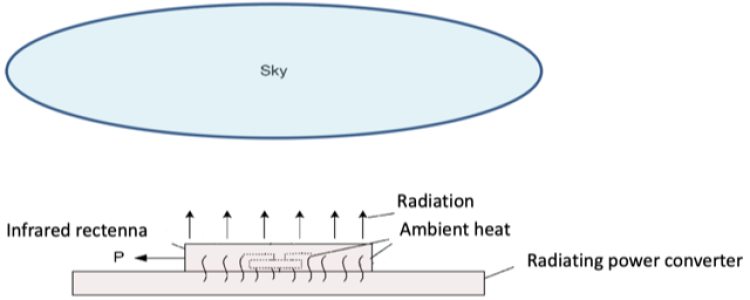Problem
Solar power is a great renewable resource, however, there’s one problem! The sun shines only in the daytime. Without inexpensive and efficient energy storage, alternative energy production systems must be available to provide nighttime power. This invention provides a method for generating renewable power during nighttime.
One potential source of nighttime power is radiation from the surface of the earth. One can harvest this energy using a rectenna system, consisting of miniature antennas coupled to high-speed diodes. The problem with this scheme is that devices that operate at ambient temperature can’t harvest radiation from an object at that same temperature. According to well-known Carnot conversion efficiency limits, there must be a substantial difference between the source and the conversion device to produce usable power.
Solution
Dr. Garret Moddel, professor of Electrical, Computer and Energy Engineering (ECEE) at CU Boulder, has invented a method to harvest energy from an ambient temperature source. As discussed, this would seem to be impossible because of the Carnot requirement that the source and converter be at different temperatures. However, this invention demonstrates that there is a way to circumvent this requirement.
The invention works by using an ambient heat source, such as the Earth, that will pass its heat through a conversion device that provides usable electrical power from thermal power passing through it. This heat is radiated by a narrow-band radiator surface that can radiate energy to an energy sink that has a temperature that is lower than the ambient temperature.
Renewable, electrical power is generated efficiently during nighttime. This can save costs, as it eliminates the need for energy storage at night, if paired with e.g. solar power. Ivy-league universities in North America, and prestigious universities in Europe and Asia have all published papers based on this invention, which demonstrates the need for this type of invention and the interest in the area.

What's Next?
This exciting technology contributing to the increased use of renewable energy in the world is available for exclusive or non-exclusive licensing.
Nicole Forsberg: nicole.forsberg@colorado.edu




